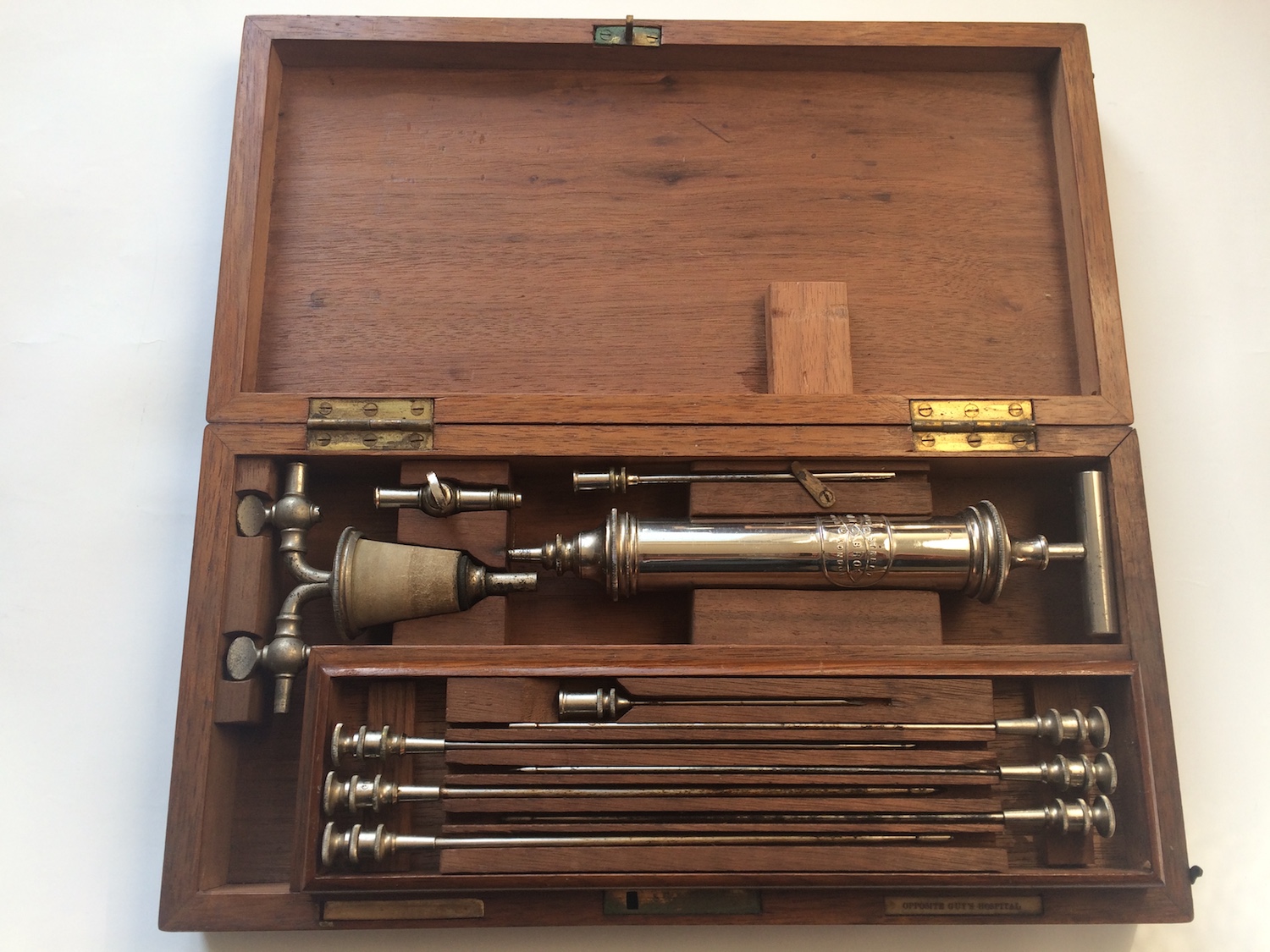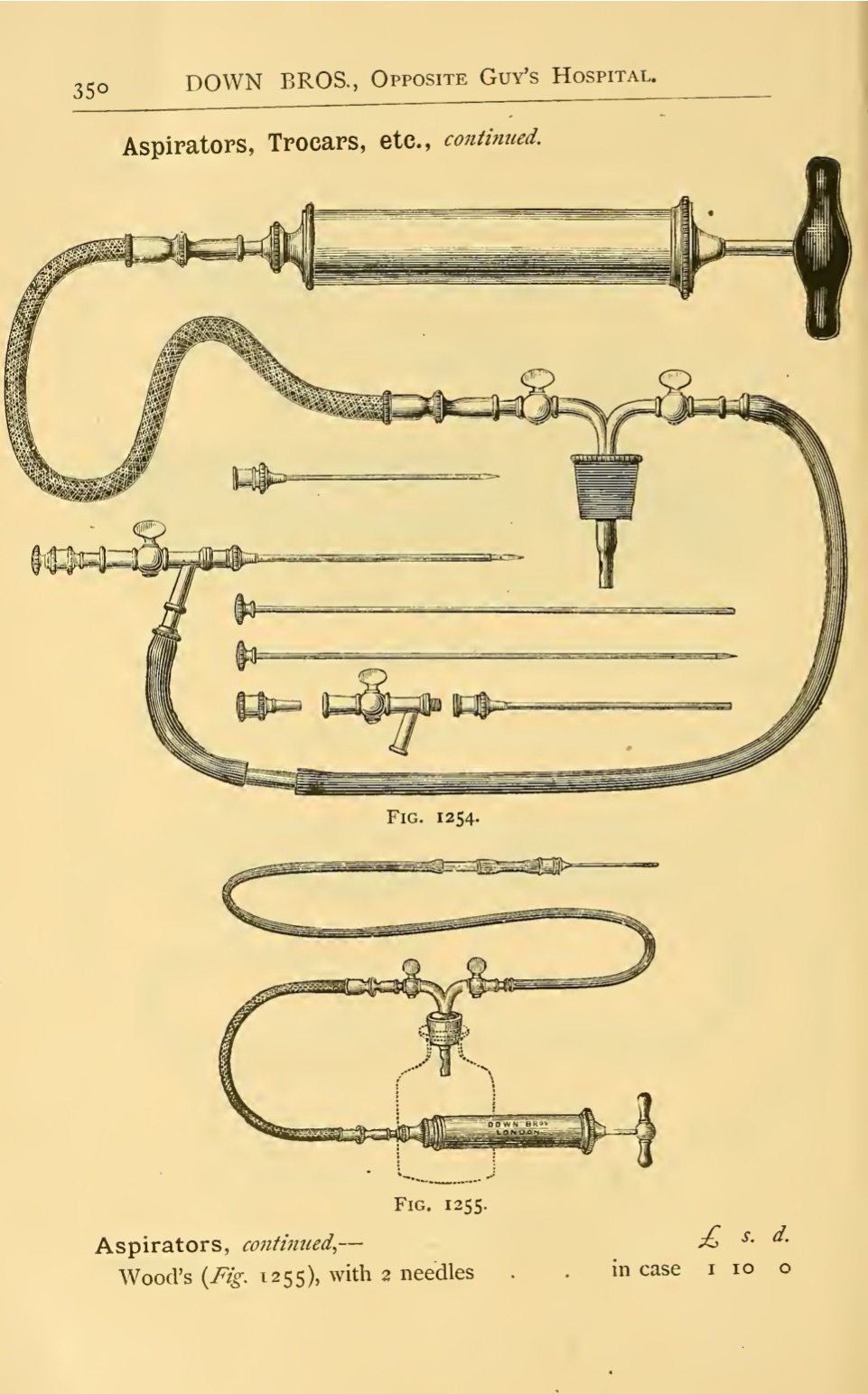Invented by a French Cardiologist
Click on individual items for an enlarged image (where available)

 The Potain aspirator is designed for the aspiration of fluids and gas from the body, including the bladder.
The Potain aspirator is designed for the aspiration of fluids and gas from the body, including the bladder.
This set, in its original wooden box, includes the valved metal aspirator syringe, the rubber bunged valve head which would fit a glass collection bottle and aspirating needles with trocar cannulae. This set was made by Down Brothers of London, probably in the early 20th century.
Pierre Carl Edouard Potain was the Professor of Clinical Medicine to the Nekker Hospital, Paris, appointed in 1875. A cardiologist, Potain first introduced the aspirator in 1869.
It was used to drain pus from abscesses and build up of fluids in the chest cavity, a common cause of heart failure. It could also be used to inject air into the chest.
Potain retired in 1900, and died the following year.
Below is a nice description of an aspirator set sold by Thackray in their 1970 catalogue, and this set appears to contain the same as the box above left:
POTAIN’S ASPIRATOR: consisting of: chromium plated all-metal pump; three stainless steel trocars, sizes: 9,
11 and 13 B.W.G *.; three nickel plated cannulae; three stainless steel blunt pilots; one stainless steel needle, size 17 B.W.G *.; chromium plated two-way stopcock; chromium plated bottle mount, fitted with stopcocks and rubber bung; rubber tubing, mounts and connections in polished mahogany case
* B.W.G. = British wire gauge
The image above right is a page from the Down's Brothers Catalogue of 1903 showing the Potain Aspirator, and how it would be set up on a glass collecting jar.
← Back to Aspirators